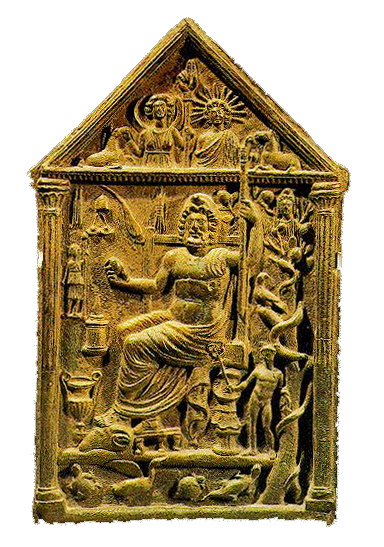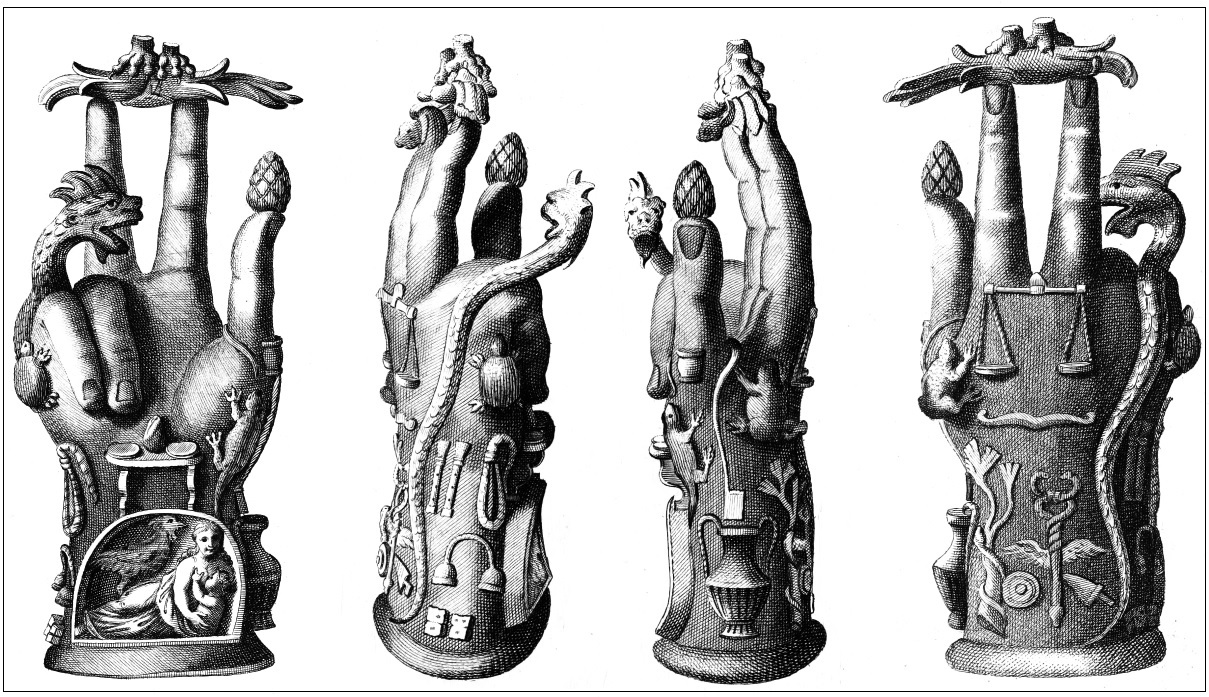

Hand of the cult of Sabazios “… On attaining manhood you abetted your mother in her initiations and the other rituals, and read aloud from the cultic writings …You rubbed the fat-cheeked snakes and swung them above your head, crying Euoi saboi and hues attes, attes hues… ”
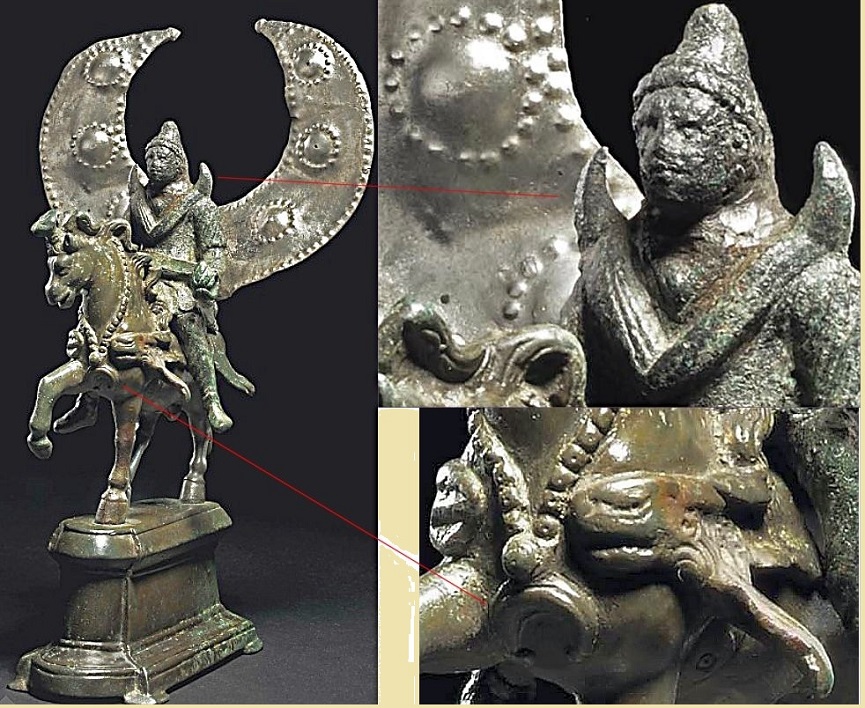
The hands take a variety of forms, with some common elements:
1. Most depict the fingers in the gesture shown in the image.
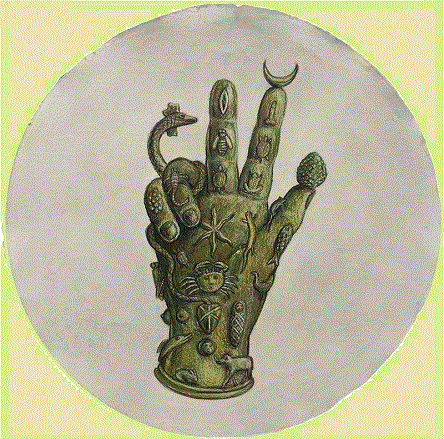
2. All have a pine-cone (or possibly even a hop-flower) either balanced upon the thumb or grasped between thumb and forefinger. In a few cases, these appears to be more explicitly depicted as the Orphic Egg, in one case holding the image of the Thracian Heros with his horse, lance and serpent adversary within. Although Thrace was a beer-drinking culture, hops were not known to have been used as a beer additive until after the medieval period.
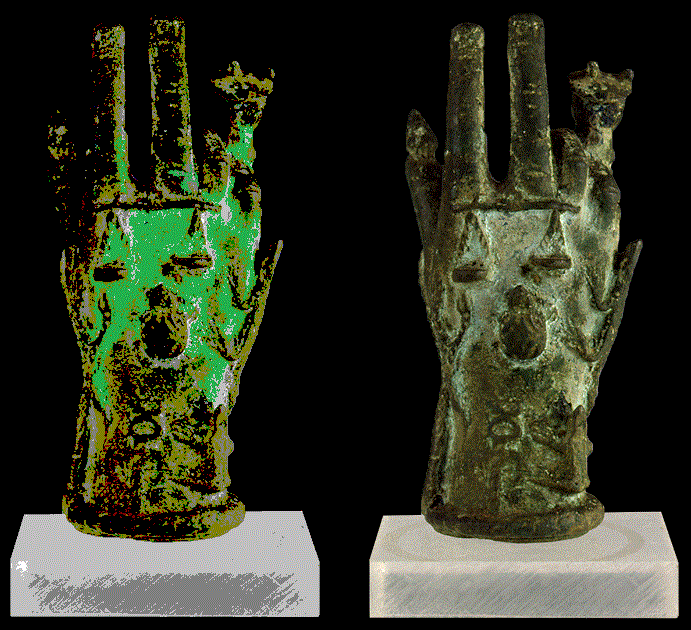
3. All have a serpent or basilisk (serpent with a cock’s comb: lit. ‘king of serpents’) representing the chthonic ideal. Other ‘serpentae’ or ‘herpetae’ such as frogs, turtles and lizards frequently accompany this.
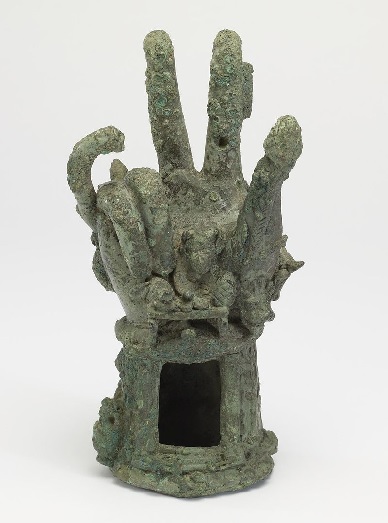
4. Most depict a mother lying with her child on the wrist part of the design. This may be an allusion to Ariadne, wife of Dionysus in the Cretan-Greek version of the myth. The birth and rebirth of ‘Dionysus’ were central parts of the Orphic mystery-legend, and Orphism was ascribec by the Greeks to Thrace.
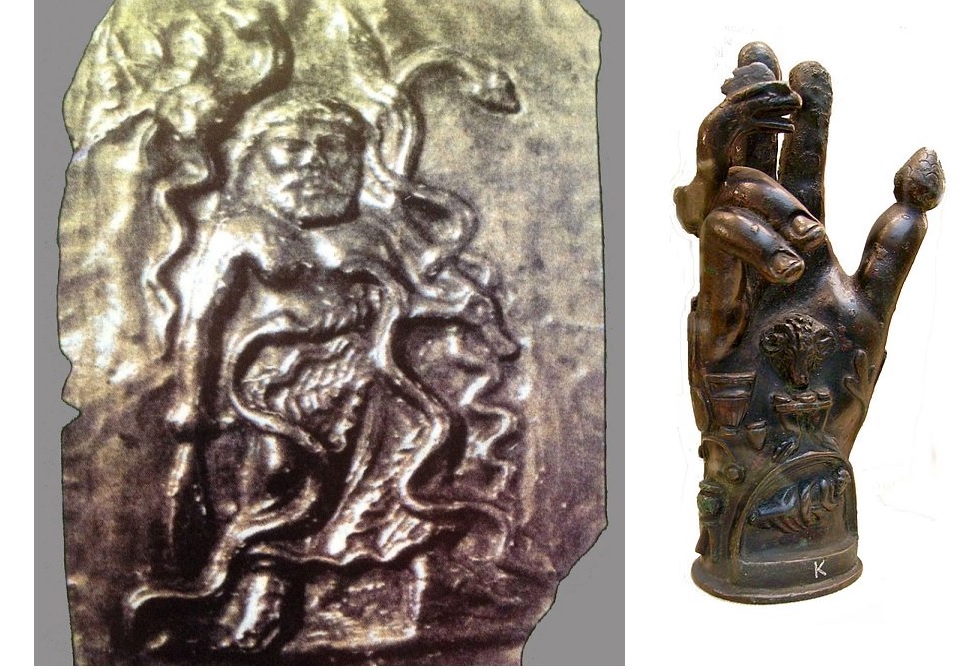
5. Most depict the Dionysian Krater and bowls or cups.
6. Most depict a ram’s head, sometimes that of a bull, upon which the god places his foot in depictions. This is redolent of the sacrifice of animals at the Dionysia.
7. Many depict a miniature figure of Sabazios himself as a bearded man sat against the extended index and middle finger of the hand. He is sometimes crowned with lunar ‘horns’.
Other iconcography commonly associated with these hands include: The Caduceus or wand of the god Hermes/Mercury (think of the serpent on the tree in the Thracian Heros images), a set of scales, a perched eagle, vines and sometimes ritual objects such as a sacrificial knife and a lituus (ceremonial wand). One example of the hand has a bracelet to which human and animal penises are attached by chains! These hands were believed to have been mounted upon poles at ceremonies.
Apart from the hands, the cult of Jupiter-Sabazios is also represented on a few ancient stelae recovered from the Roman world. Here is one particularly fine example from Roman Illyria (modern Albania) depicting what appears to be the Phrygian gods Cybele and Attis – maybe even Selene and Endymion or Artemis and Apollo – (who actually hold a pole with a hand on it!), as well as ploutic father Sabazios himself, as well as the usual icons found on the hands and ‘Thracian Heros’ stelae:
